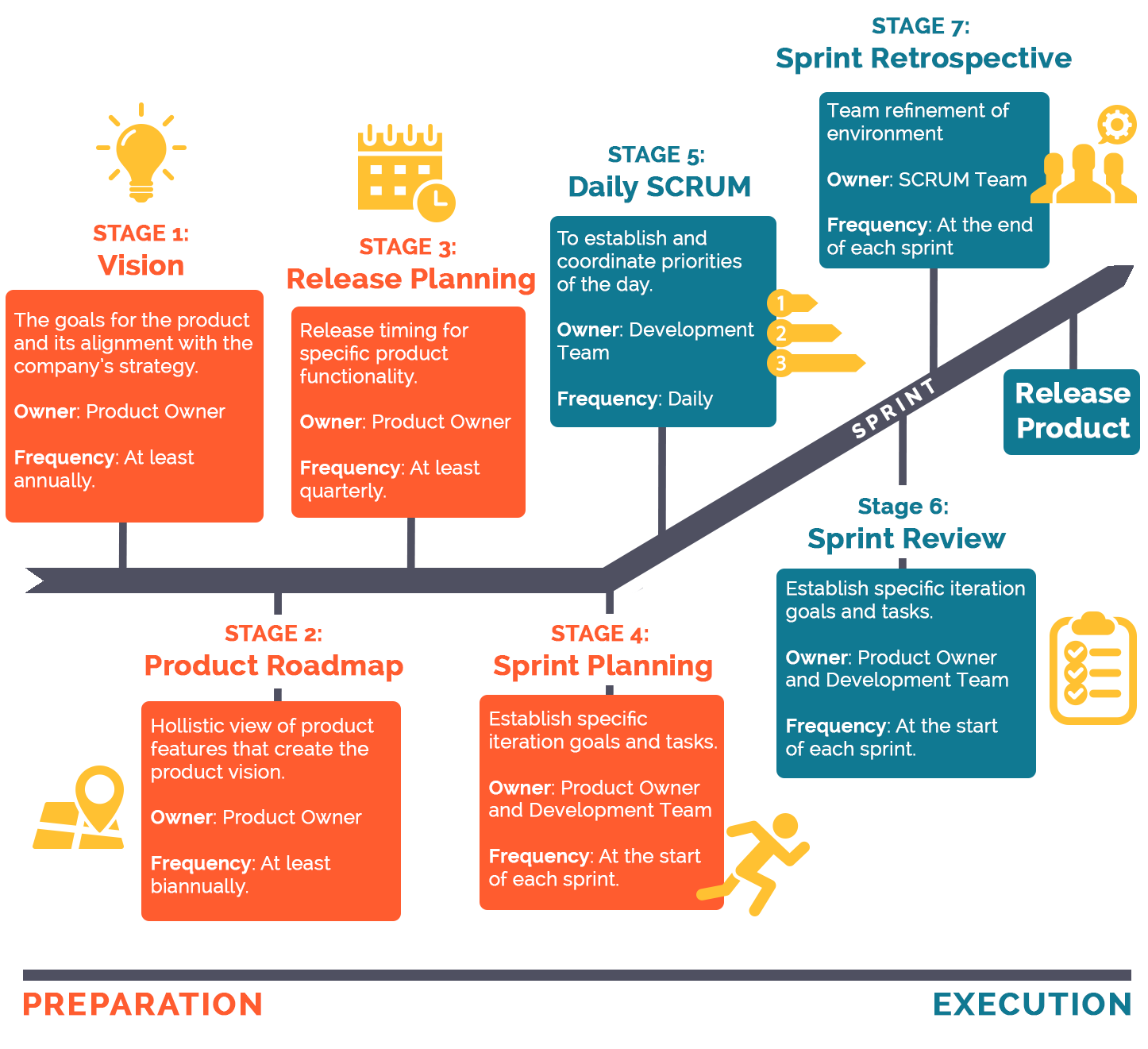Contents
James Cash “J.C.” Penney Jr., entrepreneur and founder of JC Penney Stores back in 1902, is famous for his journey from clerk in a one-room store to founder of a massive chain store development. But he didn’t reach that level of success by chance. In today's post, we're talking steady, smart and sustainable growth for your business.
 JC Penney got his start in sales. In time, the owners of the Golden Rule stores became impressed by his sales ability, and eventually he became the third partner.
JC Penney got his start in sales. In time, the owners of the Golden Rule stores became impressed by his sales ability, and eventually he became the third partner.
By 1907 he bought out his partners, who owned 3 stores at the time. He took on new partners, and by 1913 he had 34 stores. In that year, he rebranded the Golden Rule stores as JC Penney’s.
By the 1920s, JC Penney had over $1 million in annual revenue, the equivalent of $12,514,550.26 today. Nine years later, the company reached 1,392 stores.
“Growth is never by mere chance; it is the result of forces working together.” - JC Penney

Then the Great Depression happened. The chain would survive, but James Cash Penney faced great financial difficulties because of personal liabilities he took on for the company. It would take him the rest of his life to rebuild his fortune. He would later become an honorary chairman for the JC Penney chain of stores, and leave a long lasting legacy.
For James Cash Penney, “the business philosophy was simple: find good employees, train them well and sell quality goods at a small markup in order to keep the prices down.”
As entrepreneurs and business owners today, we dream of building a legacy like JC Penney or Sam Walton (Fun fact: Sam Walton got his start working for JC Penney.) But in today’s world, competition is increasing, funding is difficult and 90% of startups fail.
Fast growth is very desirable, but it can be as unsustainable as the newest lose-weight-quickly diet. Growing a company is much like building a structure. You need a foundation, a frame, and over time you add a floor… or 10.
Does this sound familiar? Between the Great Recession of 2008 and the pandemic in 2020, most are asking, is there a path to steady, sustainable growth for your business?
We start with the foundation for a sustainable growth company. Next, add a good framework, and every time you want to add a level or a new room follow a good protocol: choose a path to growth, be agile, and unify your sales and marketing efforts in such a way that you outperform your competitors. Here's a complete breakdown of everything we will cover:
Business Foundation
Business Framework
Grow Your Company to the Next Level
Let’s get started.
Business Foundation
1. Invest in the right people
The best foundation for a business is having the right people by your side, those who are willing to go the extra mile with you. This doesn’t just mean your employees or your business partner. Take the time to also invest into your mentors, your colleagues, your good customers, and your support network.
Bernd Schoner, author of The Tech Entrepreneur’s Survival Guide believes “there are certain roles that people assume in startups that make sense and I think if you are careful about that, then your odds of success go up.” These are the 6 roles he recommends you fill (note that you don’t necessarily need 6 people):
- Genius
- Leader
- Industry Vet
- Sales Animal
- Superstar (typically the genius or the CEO)
- Financial guru
“I don’t know where we should take this company, but I do know that if I start with the right people, ask them the right questions, and engage them in a vigorous debate, we will find a way to make this company great.” - James C. Collins @level5leaders
2. Diversify, but fine tune your products & services
People are the foundation of a business for a reason: ultimately they are the ones who will spend the money to buy your product or service.
Take the time to step back from the product or service you have created to identify how, when and why it’s the best fit for your buyer persona. If necessary, tweak your product to fit the persona better.
Fine-tuning your products is, in and of itself, a growth strategy. Start by focusing on your existing customers and find out:
- What product/service are they buying the most?
- What do they value the most about your product or service?
- Is there another pain point you could solve?
- Where do they purchase your product/service?
- Why do they purchase your product/service?
- Who are your customers? What roles do they have?
The answers to those questions will help you further develop your product, and eventually your marketing strategy.
“Don’t be in a rush to get big. Be in a rush to have a great product.” - Eric Ries @theleanstartup
3. Nail down your processes
Processes ensure that any success you have can be repeated over and over. You can build a business’s customer base with a great sales team, but without processes you’ll fail at delivery. If you fail at delivery enough, your company will earn a bad reputation, your growth will be short-lived and your doors will eventually close.
In short, processes are about sustaining what you have worked so hard to build.
Here are some pitfalls that indicate your processes need work:
- Increasing customer complaints, missed deadlines & bad reviews.
- Work is duplicated or not done at all.
- Employees are becoming increasingly frustrated (high turnover.)
How do you build great processes?
- Find the right person to develop, supervise & sustain them. The right person for this task can take your vision and break it down into action items. This list of action items must be prioritized by highest impact.
- Create a toolset. Get your entire team on the same page and using the same tools for the best efficiency and productivity. Look into tools like Trello, Google Apps, ClickUp, Asana, Insightly, Skitch, Zapier and more. Chances are that if you need it and can dream it, there’s an app for that.
- Automate what you can. What you can’t automate, delegate. Communicate clearly when delegating to ensure success.
- Test, update and optimize your processes constantly.
“Better to be consistently good than occasionally great.” - Mark Sanborn, @mark_sanborn
For more on the foundation of your business: "people, process & product" check out CNBC's show "The Profit" or visit Marcus Lemonis's website.
Business Framework
1. Know Your Customers
The internet has changed the way people buy.
Travel back with me to the early 1900s. Henry Ford puts together the model T, borrows the assembly line concept and brings an affordable car to the everyday American family.
He’s famous for saying “They can have any color they want… as long as it’s black.” Talk about the seller being in charge!
 For centuries, the seller had all the power. A typical sales interaction was all about the seller educating the consumer about the product, and the options, and why the seller’s option was the best. Today, the Internet has changed it all. Consumers now hold the power. Today’s consumer would tell Henry Ford: “I just found a pre-release of the Model A in white from a vendor with better reviews on Amazon.com.”
For centuries, the seller had all the power. A typical sales interaction was all about the seller educating the consumer about the product, and the options, and why the seller’s option was the best. Today, the Internet has changed it all. Consumers now hold the power. Today’s consumer would tell Henry Ford: “I just found a pre-release of the Model A in white from a vendor with better reviews on Amazon.com.”
The Internet has created a new dynamic by placing vast amounts of knowledge into the buyer’s hands. Today’s consumer is no longer dependent on the seller for information: it is plentiful and easily available, and that’s also good news for sellers.
The abundance of information in the digital age allows you to get to know your customers on a whole other level. As the old adage goes, “Knowledge is power.”
The digital age has also brought power to sellers through technology. Sellers can now do amazing things like:
- Pinpoint the geographic location (within a half mile) of every website visitor
- Receive an alert when a prospect visits your website or opens your e-mail
- Personalize the product offerings and overall experience of your website based on the visitor
Don't make assumptions when it comes to your buyer's persona. Let the data drive the decision making.
In a world with an abundance of knowledge, knowing your customers goes way beyond demographic data.
According to Adele Revella, founder of the Buyer Persona Institute, “too often, buyer profiles are nothing more than an attractive way to display obvious or demographic data.”
Revella’s expert recommendation to developing buyer personas is to discover the 5 rings of buying insight:
- Priority initiatives: What causes certain buyers to invest in solutions like yours?
- Success factors: What results does your buyer expect to achieve by purchasing your solution?
- Perceived barriers: What concerns cause your buyer to believe that your solution isn’t the best option?
- Buyer’s journey: What process does your buyer go through to find a solution?
- Decision criteria: Which aspects of the competing products, services, solutions or company does your buyer perceive as most critical? What are their expectations?
2. Know Your Competition
In the same way the Internet has provided you with an abundance of data on your customers, it also allows you to “spy” on your competitors.
So what should you find out about your competition? The short answer: everything you can. The long answer starts with these top 3 items:
- Know who their customers are & what products/services they offer (use this to define how yours is different/better.)
- Learn what their marketing message is (and use this to define how yours is better.)
- Find out where they are marketing.
PRO TIP If you're just getting started with your business, you competitors are your best friends. You don't need to reinvent the wheel. Find the competitor that does what you are after the best and model what has worked for them.
3. Know Your KPIs
In order to grow, you’ll need to know which levers impact your business, as well as how to move them and measure them. KPIs or “key performance indicators” measure the levers that will impact your growth and your bottom line.
So how do you determine your KPIs?
- Define your business objectives.
- Turn your business objectives into SMART goals
(Specific, Measurable, Attainable, Relevant, Timely.) - Define the KPIs for each goal
SPECIFIC
- Define the goal as much as possible with no unclear language
- WHO is involved, WHAT do I want to accomplish, WHERE will it be done, WHY am I doing this, WHICH constraints and/or requirement do I have?
MEASURABLE
- Can you track the progress and measure the outcome?
- How much, how many, how will I know when my goal is accomplished?
ATTAINABLE/ACHIEVEABLE
- Is the goal reasonable enough to accomplish? How so?
- Make sure the goal is not out of reach or below standard performance.
RELEVANT
- Is the goal worthwhile and will it meed your needs?
- Is each goal consistent with the other goals you have established and fits with your immediate and long term plans?
TIMELY
- Your objective should include a time limit and/or deadline.
- It will establish a sense of urgency and prompt you to have better time management.
You can have both internal and external KPIs. Great KPIs are instantly useful, measurable, and have great impact on your bottom line.
EXAMPLE: SMB R’Us
 SMB R’Us is a family owned and operated company that provides high quality business acronym services. Since it start in 1970, SMB R’us has been dotting Is and crossing Ts.
SMB R’Us is a family owned and operated company that provides high quality business acronym services. Since it start in 1970, SMB R’us has been dotting Is and crossing Ts.
- Objective: Add more clients
- SMART Goal: Add 1 client per month by June 30, 2017
- KPIs: Monthly website visitors. online and/or phone leads, and lead to customer close ratio.
Grow your business to the Next Level
1. Choose Your Growth Plan
Not all growth is created equal.
In fact there are 4 different paths to growth for your business: improvements, innovations, scaling and strategic acquisitions.
Improvements are about increasing efficiency. You can improve the quality of your product or your service and improve your margins in the process.
Innovation is about the next, bright and shiny, spanking new thing. You can rearrange, combine or change up your efforts to create a new product or service for your business, but it’s risky.
Scaling is the most common form of growth. You increase your bottom line by increasing your customers.
Strategic acquisitions can be tricky, but can be worthwhile if you make smart investments like J.C. Penney. Find a new market. Invest in a partnership.
Take the time to perform a SWOT analysis for yourself and your company. Ask yourself:
- How much am I willing to invest for the growth I want to see?
- Are there improvements I can make to my processes that can lead to an increased bottom line?
- What resources are available to me? How can I repurpose or repackage my current products and services?
- Are there opportunities to expand my market?
- Are there experts that I can partner with who have been there, done that?
Select only one path to growth at a time. If you try to do more than one at a time, you’ll burn yourself out.
If you're looking for the least risky option, go for scaling your existing business.
2. Learn to be Agile
No matter what path to growth you choose, you must embrace an agile approach.
Although agile originated in software development, the agile approach can be applied to any area of your business including management, processes/project management, marketing and even sales.
When it comes to agile, the number one priority is to provide the greatest value via continuous improvement and scope flexibility. This graphic shows how agile can be applied to the release of the product.
Contrary to the often used “waterfall” of steps to follow, agile is about working toward one goal all together without knowing when or what the next iteration will be. In other words, you plan your activities and work all together to accomplish 1 project (sprint) and depending on what you learn in the sprint, you plan the next.
You can learn more about agile in Jeff Sutherland’s book Scrum: The art of doing twice the work in half the time.
3. Unify Revenue Operations: Sales, Marketing & Customer Success
This agile process will come in handy, especially when unifying your sales and marketing efforts. You cannot grow on any of the four paths unless sales and marketing are involved.
Without sales and marketing, you could have the greatest new idea and the best new product, but no one will know about it.
The more traditional approach has been to separate sales and marketing. However, studies show that failure to align sales and marketing teams around shared processes and technologies costs B2B companies 10% or more of revenue per year.
According to Marketo, sales and marketing teams that operate in sync are 67% better at closing deals.
Convinced? Ready to get started? Here’s how to unify your marketing & sales teams:
How To Unify Marketing & Sales
1. Set clear definitions
- Sales funnel & stages
- Communication channels
- Sales & marketing goals
2. Set up closed loop reporting & share data
- Marketing software
- CRM software
- Lead alerts
3. Host marketing meetings
- Bring your marketing and sales team into the same room.
- Plan a sprint together.
Your sales and marketing teams need to work together well, but they need to be able to pull their weight individually as well. Is your sales team and marketing strategy up to par?
Ask yourself these questions:
Characteristics of a Great Sales Team
- Are my salespeople collaborating with one another or are they too focused on meeting their individual goals to work together?
- Are my salespeople strong communicators? Do they inspire trust?
- Are my salespeople adding value beyond what the Internet can provide to prospects?
- Are my salespeople self-motivated?
Characteristics of a Successful Marketing Program
- Is my marketing program focused on finding ideal customers where they are?
- Is my marketing strategy completely agile? Is it adapting to the ever-changing market?
- Do I know where my marketing dollars are going? Can I see the ROI?
- Do my online marketing efforts generate leads for my salespeople? Are my website visitors converting?
- Can my marketing plan grow with my business or will I need to look for a new solution for the long term?

4. Outwork the Rest
A great marketing plan and committed sales team can go a long way, but at the end of the day, as the leader of your business, you have to outwork everyone.
You have to lead your team and you have to work harder, smarter and faster than your competition. As JC Penney said in the quote at the start of this ebook, “Growth is never by mere chance; it is the result of forces working together.”
Think about it:
“If you don’t work for it, why do you think you deserve it?”
- Marcus Lemonis @marcuslemonis

Ashley Quintana, M.S., B.A.
Ashley Quintana is a co-founder of BridgeRev. In her role, she develops, leads, and executes digital marketing strategies for the company’s growing client base, including a Fortune 500 subsidiary and an NBA basketball team. Ashley’s work can be found in the Hispanic Journal of Behavioral Science, and she is an OKC.biz 40 Under 40 honoree for her leadership in business and community. She frequently speaks at universities, churches, and conferences on marketing, diversity, and business.



